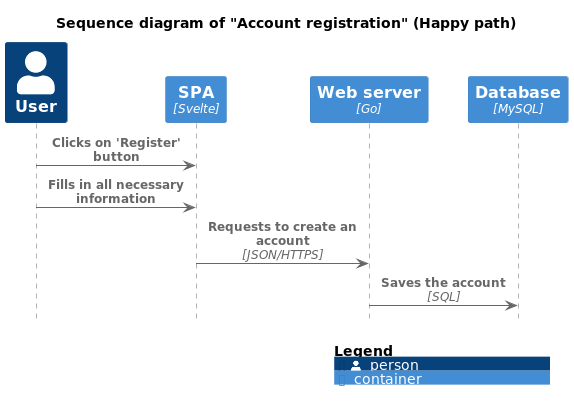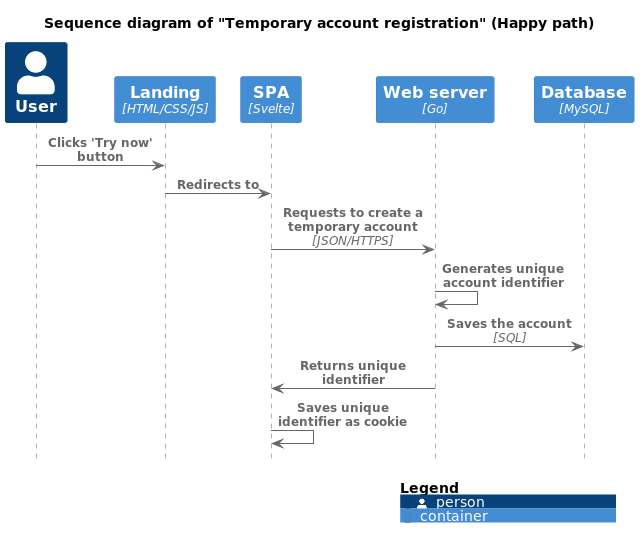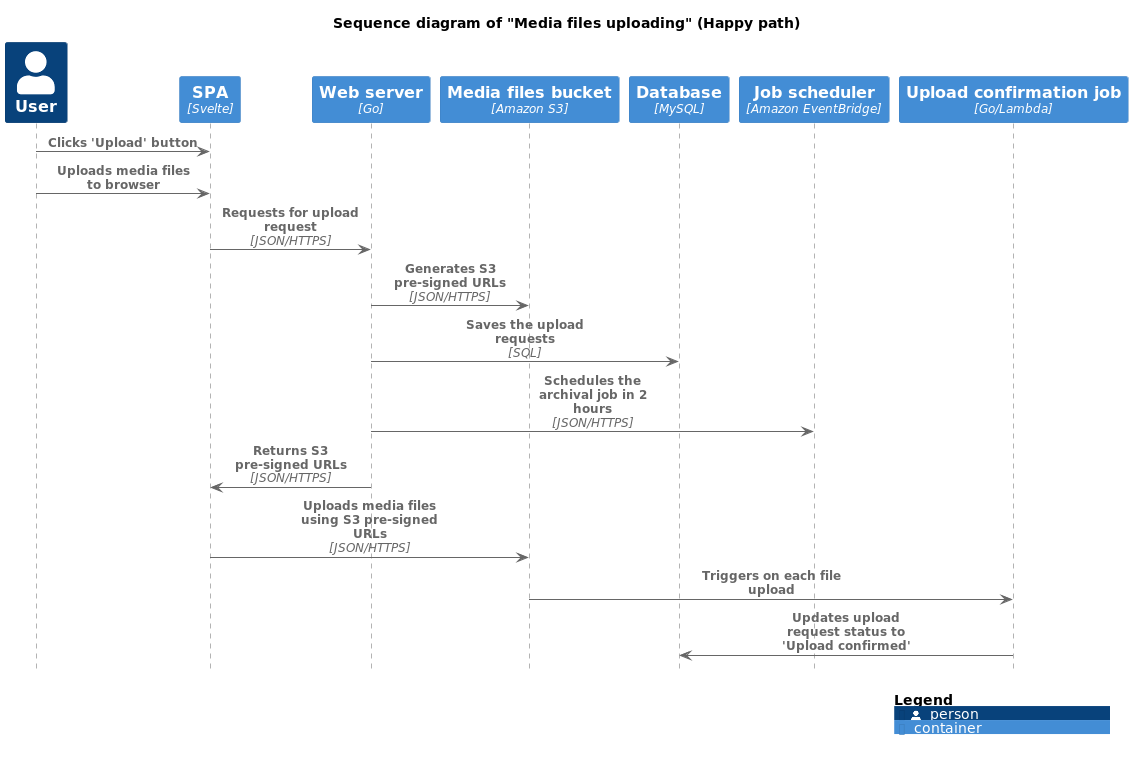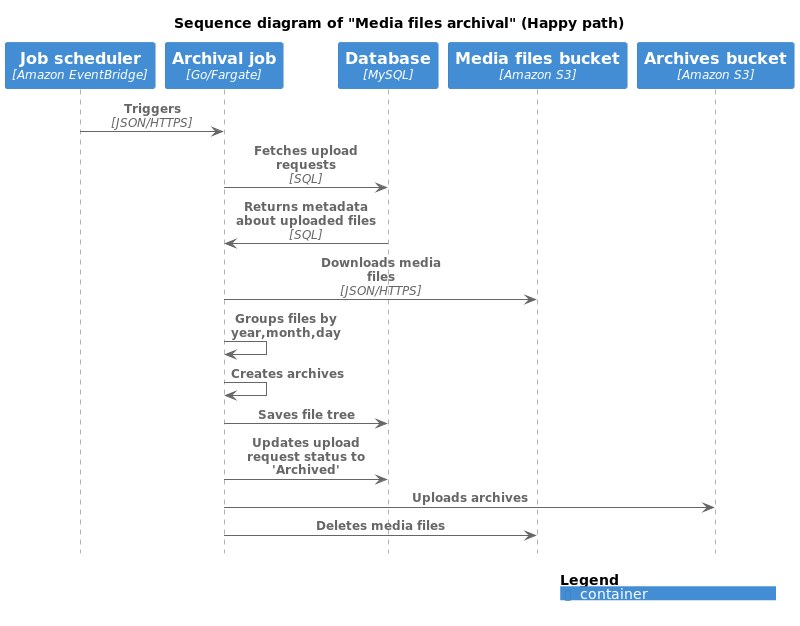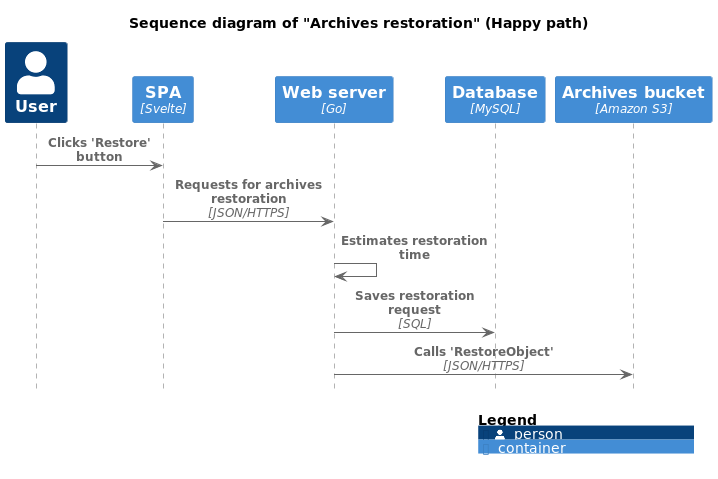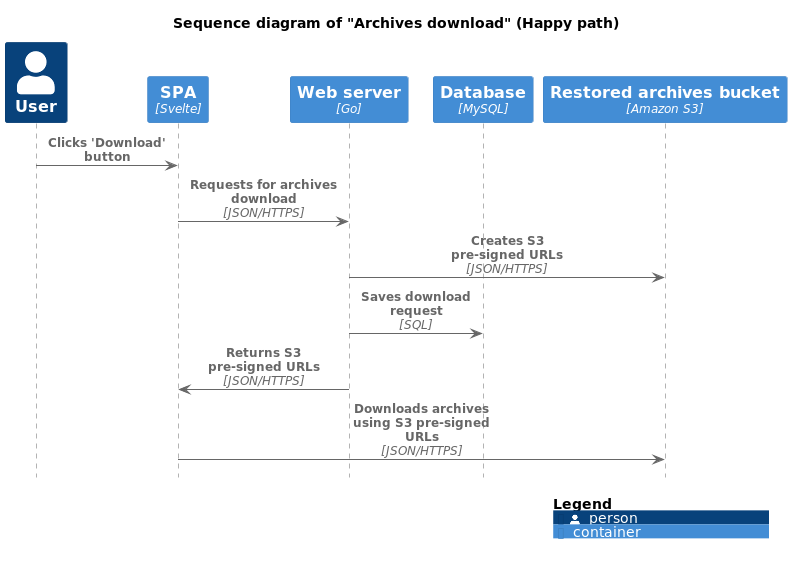To safely, reliably and cost-effectively store family photo-video archives for decades
To develop easy-to-use software solution to help people safely archive their photos videos for decades using cloud technologies
- Reliability
- User experience & communication
- Experiments & Innovation
- Documentation
- Multiple copies
- Customer is a User that exceeds free plan of the product.
- User is a visitor that tries out the product.
- Development team is a group of people improving and supporting the product.
- As a customer I want to have pay-as-you-go pricing, because I don't want to pay for unused storage.
- As a customer I want to have a transparent billing report, because I want to know how&why I am charged exactly that amount of money.
- As a customer I want to have a solid account recovery process, because I want to restore my account even if I lost my email & password.
- As a user I want to access the product in anytime, because it is comfortable to me.
- As a user I want to have an automatic trial account to experience the product without registration.
- As a user I want to have UX with minimal steps to complete archival, because I want to upload photos without tutorials and with minimal steps required.
- As a user I want to be notified about the state of the uploading, because I want to understand that my photos and videos are 100% uploaded.
- As a user I want to archive my photos and videos reliably, durably, cost-effective, securely in original form for long-term, because I want to have a 100% reliable backup.
- As a user I want my photos and videos automatically sorted in folders, because it's hard and time consuming to sort by hand.
- As a developer I want to deploy the product frequently, fast, safely, in parts to production, because I want the user have the latest updates and fix bugs fast.
- As a developer I want to have short dev cycle and fast builds/deploys, because I want to develop and test new features quickly.
- As a developer I want to develop cost-optimized product, because I want big money bonus :)
This section describes key stakeholders of the system and their needs.
- SH-1: User (availability, performance, durability, security, scalability)
- a user wants to try out the system without a registration hassle
- a user wants to access the system anytime
- a user wants a system to respond fast
- user's media files MUST NOT be lost in any case
- user's media files MUST NOT be accessible to anyone else except the customer
- SH-2: Customer (traceability, cost-effectiveness)
- a customer wants to see a detailed billing report
- a customer wants to pay as little as possible
- SH-3: Development team (extensibility)
- a developer wants a fast dev cycle and fast deployments
-
UC-1: Registration
- a user who wants to try out the system automatically gets a temporary account (SH-1)
- a user creates a permanent account, adds credit card (SH-1)
-
UC-2: Media files uploading
- a user uploads photo or video files (SH-1)
- a user receives feedback on upload progress (SH-1)
- a user reuploads files if uploading was stopped due to network errors (SH-1)
-
UC-3: Media files archival
- a user may schedule archival of files immediately (SH-1)
-
UC-4: Media file navigation
- a user navigates file tree (SH-1)
- a user sees folders, archives, files inside archives (SH-1)
-
UC-5: Archives restoration
- a user restores archives (SH-1)
- a user receives feedback on restoration progress (SH-1)
-
UC-6: Archives download
- a user downloads restored archives (SH-1)
-
UC-7: Metrics reporting
- a user sees his service usage metrics (SH-1)
-
UC-8: Billing
- a customer is billed automatically each month based on his service usage if exceeds a free plan (SH-2)
- a customer sees his billing history and invoices (SH-2)
-
UC-9: Recovery
- a user can recover his account using email or phone or recovery phrases
- QA-1: Availability (UC-1, UC-2, UC-4, UC-5, UC-6)
- registration, media uploading, navigation, restoration downloading must be highly available, because outages will negatively impact user experience, thus business
- 99.9% seems ok (Google SRE book reference)
- QA-2: Performance (all UCs)
- response time < 1s for page load
- the navigation must feel as smooth as file explorer on a local PC
- QA-3: Durability (UC-2, UC-3)
- uploaded files, archives must not be lost or corrupted
- QA-4: Security (UC-1, UC-2, UC-6)
- user's sensitive information (keys, password) must be encrypted in transit and at rest
- user's media files must be encrypted in transit and at rest
- customer's card information must be stored in PCI compliant third-party entity
- QA-5: Scalability (UC-1 - UC-6)
- number of customers - thousands
- GB of media files per customer per year - 250 GB (doubled as estimation)
- data heavy application - consider partitioning/sharding
- QA-6: Traceability (UC-8)
- user's actions which may incur bill number to increase must be retrievable as log
- QA-7: Extensibility (all UCs, SH-3)
- the system must be modular, so features don't intersect with each other
- QA-8: Cost-effectiveness (all UCs)
- the system must be the same price as Google Drive or less (Pricing calculation document)
System context diagram and container diagram are on IcePanel.
The system contains of backend and frontend parts.
Frontend part contains of the next containers:
- Landing page - family-archive-landing
- SPA - family-archive-spa
Backend part contains of the next containers:
- Web server - family-archive-web-server
- Archival job - family-archive-archival-job
- Upload confirmation job - family-archive-upload-confirmation-job
Not every use case is depicted in sequence diagrams, because I haven't thought about them yet.
